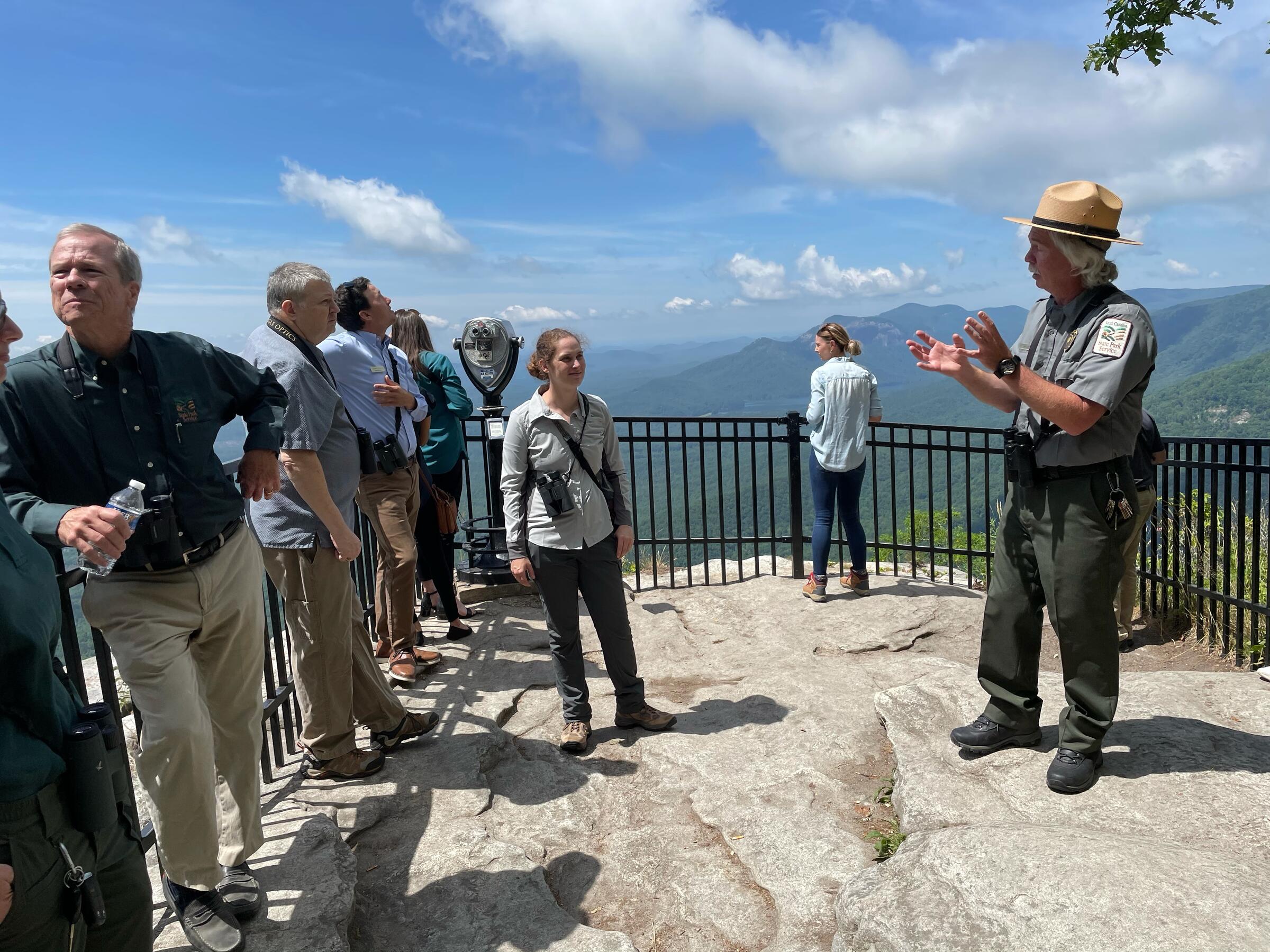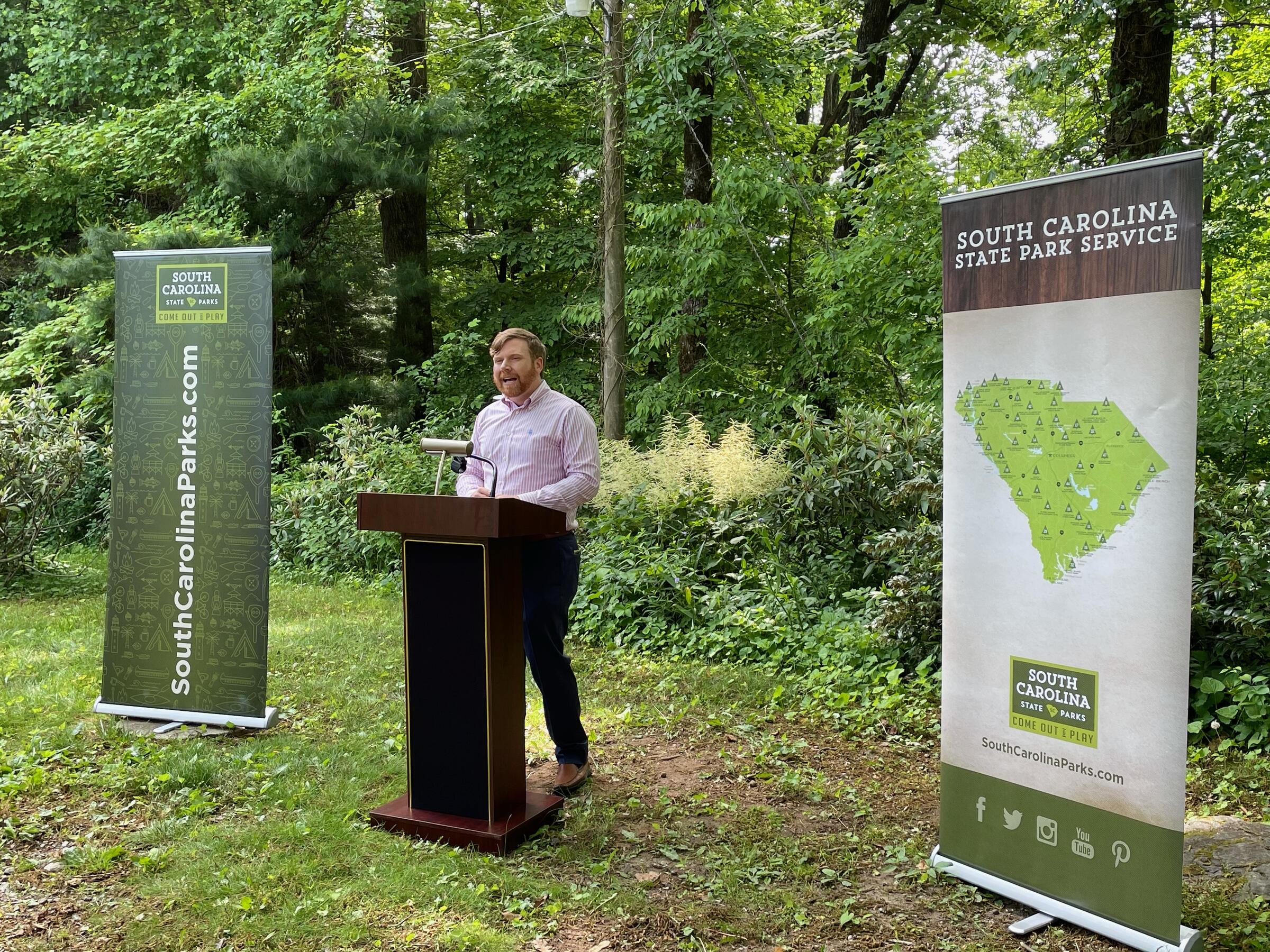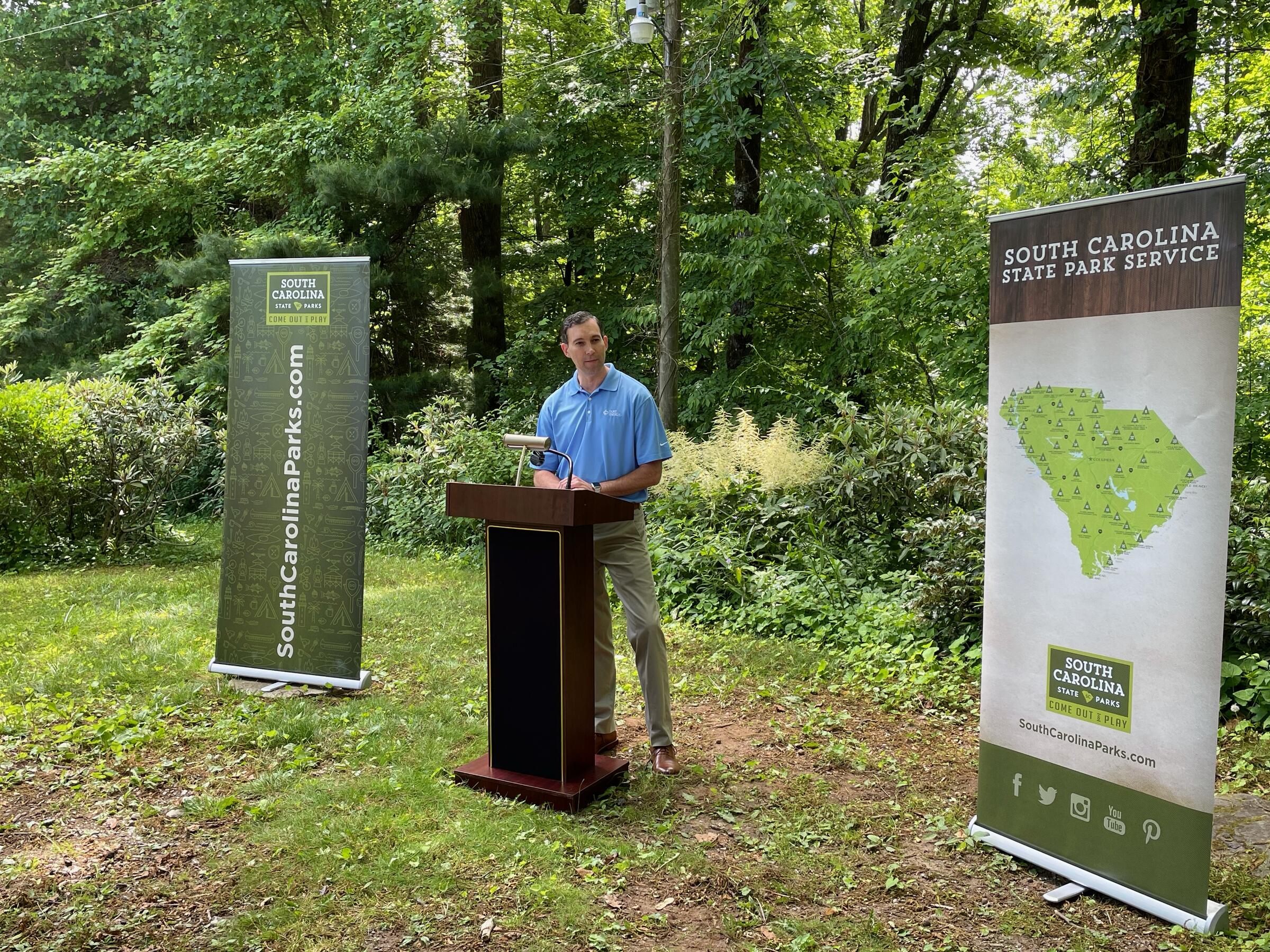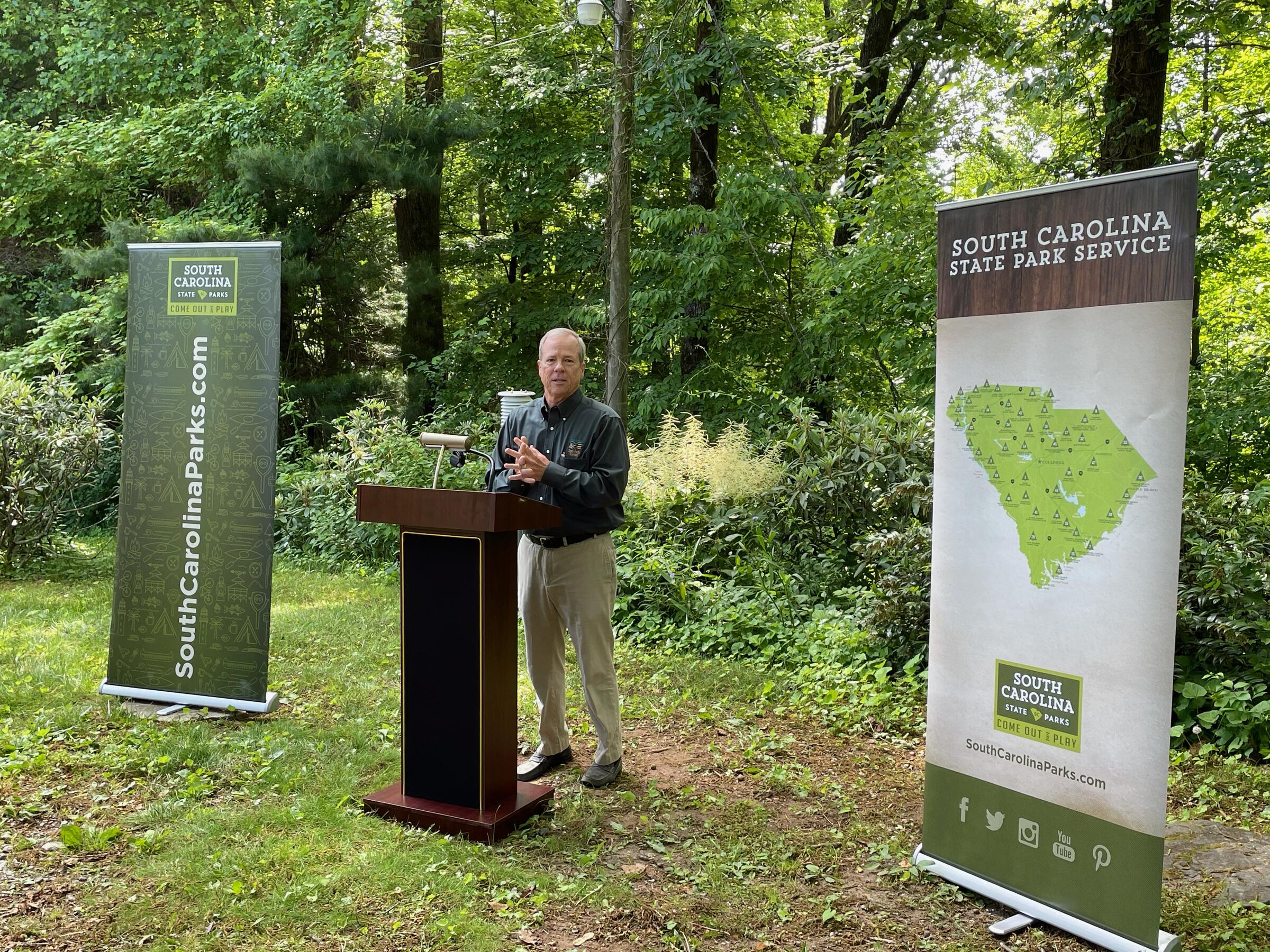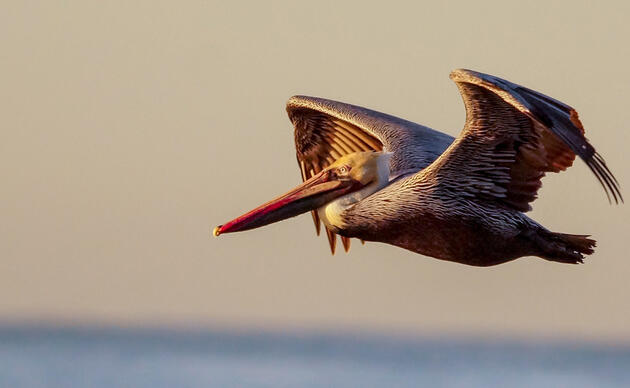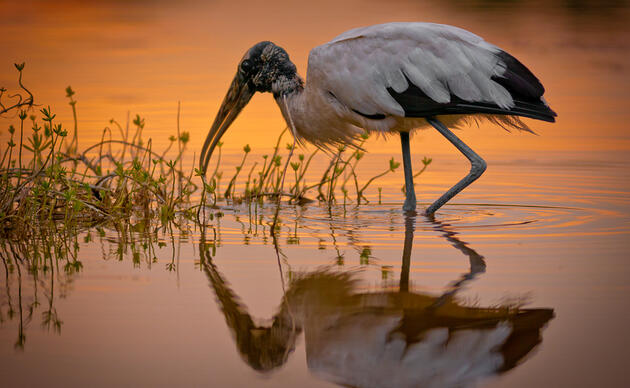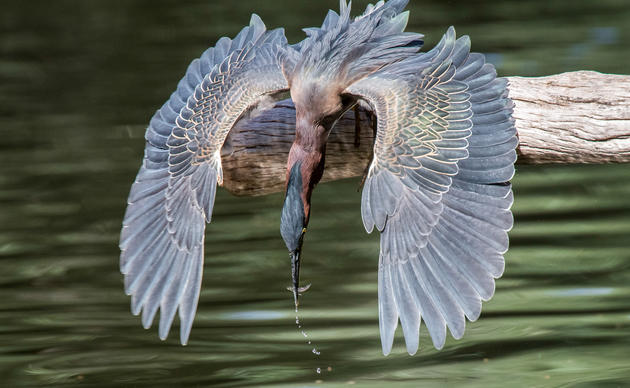Greenville, S.C. (June 4, 2021) - Today, Audubon South Carolina, Duke Energy, and the South Carolina Department of Parks, Recreation & Tourism (SCPRT) unveiled a new Motus Wildlife Tracking tower at Caesars Head State Park.
Audubon South Carolina installed the tower, which Duke Energy Foundation generously funded and SCPRT graciously agreed to host, as part of a collaborative effort to build a comprehensive network of Motus Wildlife Tracking towers across the state. The Caesars Head tower, which is the first of its kind in the Upstate, complements four other Motus towers already installed along South Carolina’s coast.
“The success of the Motus Wildlife Tracking System relies on strong cooperation among scientists, conservation organizations, educational institutions, communities, and parks,” said Justin Stokes, Audubon South Carolina Executive Director. “The tower at Caesars Head marks an important investment in the conservation of imperiled birds and other migratory species in the Upstate, and across the entire Motus network, and we are thrilled to partner with Duke Energy and the Department of Parks, Recreation & Tourism to make the project a reality.”
Motus technology uses coordinated automated radio telemetry arrays to track the real-time path and movement of birds and other wildlife. To capture data, which is collected by the Motus tower network and is viewable to the public on the Motus website, researchers across the hemisphere attach temporary nanotag transmitters to individual species of concern. Those nanotags emit signals that nearby Motus towers pick up, creating a real-time migration log for tagged individuals.
“Duke Energy has a long history of working with organizations like Audubon and state parks to ensure that both lively economies and a thriving natural habitat can co-exist,” said Mike Callahan, President, South Carolina, Duke Energy. “We are committed to investing resources and working alongside our community partners to ensure future generations learn about and enjoy the beauty of the nature around us.”
“During Hawk Watch, thousands of park visitors enjoy the spectacular sight of fall raptor migration, where hundreds of migrating raptors – from bald eagles to black vultures – journey to their winter habitats,” said Duane Parrish, Director, SCPRT. “We are grateful for this partnership and look forward to incorporating Motus tower data into existing annual programing and community science projects at Caesars Head State Park.”
At Audubon South Carolina, researchers are focused on determining the pathways and critical stopover locations for a number of priority bird species, including Swainson’s Warblers, Prothonotary Warblers, Painted Bunting, and shorebirds like Red Knots, which migrate up and down the Atlantic Flyway, the main migratory route along the East Coast of the United States. The data collected from South Carolina’s Motus network also supports the National Audubon Society Migratory Bird Initiative, which uses tracking, banding, and e-Bird data to update Important Bird and Key Biodiversity Areas across the western hemisphere, ultimately improving understanding and conservation planning for imperiled migratory birds and the habitats they need.
Research tells us that North America has lost nearly 3 billion birds over the last several decades, and eastern forests alone have lost 170 million birds. Birds are the proverbial canary in the coalmine, as the issues affecting birds also affect people, our quality of life, and our economies. Through the Motus Wildlife Tracking Tower network, Audubon South Carolina and other partners, including USFWS, SCDNR, Nemours Wildlife Foundation, Dewees Island Conservancy, and Charleston Audubon, aim to cultivate an understanding of the importance of bird conservation and the protection of greenspaces throughout local communities. Duke Energy’s investment in the Caesars Head Motus tower and the partnership with Audubon South Carolina and SCPRT helps continue momentum on ambitious plans to expand the Motus tower network throughout South Carolina.
###
For photos and video clips, please click here.
About Audubon South Carolina
Audubon South Carolina protects birds and the places they need, right here in South Carolina. We’re the state office of the National Audubon Society, which has more than one million members and a century-long track record of success. In South Carolina, we represent more than 26,000 Audubon members and supporters, eight Audubon chapters and bird club partners, two Audubon centers and more than 26,000 acres of land that we own and manage. Learn more about what we do and how to help at sc.audubon.org. Follow us on Facebook at @SCAudubon, Twitter at @AudubonSC, Instagram at @Audubon_SC, and online at sc.audubon.org.
Jennifer Tyrrell, Audubon South Carolina, jennifer.tyrrell@audubon.org, (703) 967-1231
About Duke Energy
Duke Energy, a Fortune 150 company headquartered in Charlotte, N.C., is one of America’s largest energy holding companies. Its electric utilities serve 7.9 million customers in North Carolina, South Carolina, Florida, Indiana, Ohio and Kentucky, and collectively own 51,000 megawatts of energy capacity. Duke Energy got its start in South Carolina more than a century ago as an economic development company, identifying a need to supply reliable, low-cost electricity to the rapidly growing textile industry primarily through renewable hydro power. Today, the company’s nearly 3,700 employees in South Carolina serve more than 780,000 electric retail customers across 30 counties in the state.
Ryan Mosier, Duke Energy, ryan.mosier@duke-energy.com, (843) 617-3448
About South Carolina Department of Parks, Recreation & Tourism
The South Carolina Department of Parks, Recreation & Tourism is a cabinet agency assigned to operate and manage South Carolina's 47 state parks, market the state as a preferred vacation destination and provide assistance to communities to develop recreation assets. Its vision is to enhance the economic well-being and improve the quality of life of all South Carolinians. Learn more at scprt.com, SouthCarolinaParks.com and DiscoverSouthCarolina.com.
Sam Queen, South Carolina Department of Parks, Recreation & Tourism, sam@scprt.com, (803) 767-3568

